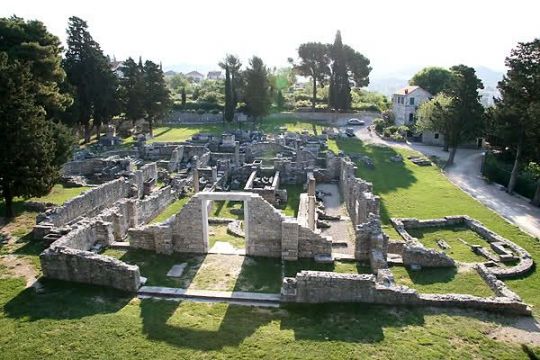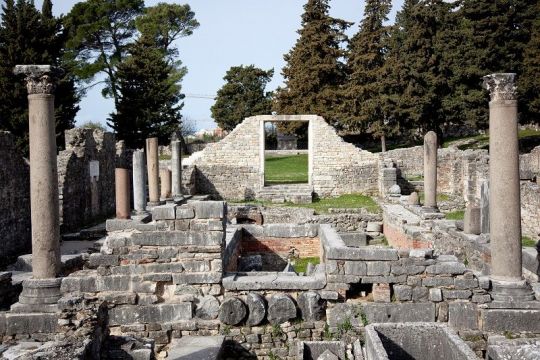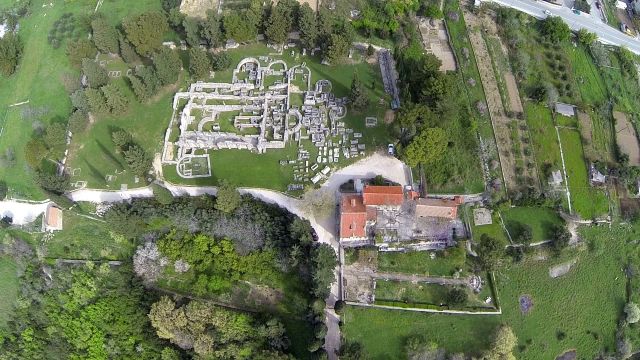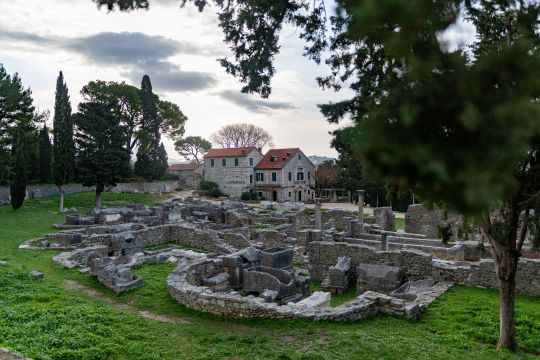Roman customs and laws ordered that the dead be buried outside towns, and the Christians followed the tradition, as well. In Salona, the first Christian cemeteries were created at the time of illegality, when Christianity had no right of preaching, on private country lands such as Kapljuč, Manastirine and Marusinac. Here, at graves of prominent members of the Christian community, or even a local martyr, worshipping of their remains gradually developed, and the Christians’ desire to be buried as close as possible to their champions has resulted in large cemeteries. There, above some chapel or memory, whereever a religious dignitary was buried, they built large cemetery basilicas.
The name of Manastirine was given by the local tradition that in the old ruins one often sees traces and remains of monasteries. In the religious tradition and lives of local saints, this locality is connected with the legend on transportation of relics of the Salonitan martyrs Domnio (Sv. Dujam, the patron-saint of Split) and Anastasius of Aquilea (Sv. Staš) from Salona to the cathedral of Split. The legend is mentioned by the emperor Constantine Porphirogenitus and the Split chronicler, archdeacon Toma. At the Manastirine cemetery they buried the martyrs Venancius (?), Domnio and Septimius.
Ruins at this site attracted the attention of Salona researchers. K. Lanza, the first director of the Archaeological Museum of Split, who excavated near St. Dujam’s Church, at the entrance to the archaeological site, 180 years ago. His son, Franjo, who later took over at the Museum, presented the first description of the finds. After them, Manastirine was excavated by F. Carrara, then by M. Glavinić, who published the first ground plans. F. Bulić organised the First International Congress on Old-Christian Archaeology at Manastirine in 1894. The Austrian archaeologist R. Egger also performed excavations here, yet the entire area has never been fully excavated, not even after the additional researches were carried out and the new finds obtained by the Croatian-French archaeologist team headed by the director of the Archaeological Museum of Split, E. Marin, and the Frenchman N. Duval.
This archaeological site is particularly important for ecclesiastical history since here they buried Dujam, a Salonitan bishop and martyr, later the patron of Split, who was executed during Diocletian’s persecutions of the Christians in 304. Remains of many cemetery chapels with sarcophaguses, were erected around the martyr’s grave, and of churches built here on several layers, make an archaeological situation very hard to read today.
[Edit mode] Swiper Gallery: att Manastirine













